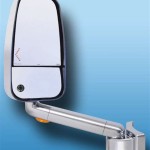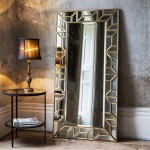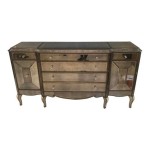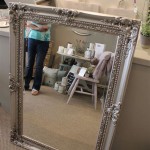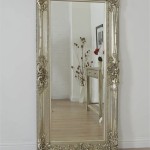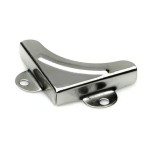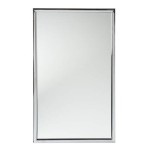Can I Use Liquid Nails On A Mirror?
Mounting a mirror can be a straightforward process with the right adhesive. However, using the correct adhesive is crucial to prevent damage to the mirror's backing and ensure secure, long-lasting adhesion. While Liquid Nails is a popular and versatile adhesive, its suitability for mirrors requires careful consideration.
Mirror Backing Compatibility
Not all mirror backings are created equal. Some mirrors have a protective coating that may be incompatible with certain adhesives, including some variants of Liquid Nails. The solvents within some Liquid Nails formulations can damage the backing, causing discoloration, clouding, or even disintegration. Before using any adhesive, consulting the mirror manufacturer's recommendations is crucial. The manufacturer may specify approved adhesive types or caution against using specific products like Liquid Nails.
Liquid Nails Product Variations
The term "Liquid Nails" encompasses a broad range of adhesives, each formulated for specific applications. Some variants are designed for construction projects and contain strong solvents, while others are formulated for lighter-duty tasks and might be more suitable for mirrors. It's essential to identify the specific type of Liquid Nails being considered and carefully examine its product data sheet. The data sheet will provide information on the adhesive's chemical composition, recommended substrates, and any potential adverse effects on sensitive materials like mirror backings.
Weight and Size of the Mirror
The weight and size of the mirror significantly influence the adhesive's suitability. Heavy or oversized mirrors require an adhesive with a high weight capacity and strong bonding properties. While some Liquid Nails products might be suitable for smaller, lightweight mirrors, they might not provide sufficient support for larger, heavier ones. In such cases, using a specialized mirror adhesive designed for heavy-duty applications is often recommended. These specialized adhesives are typically formulated to avoid damaging mirror backings and provide a secure, long-lasting bond.
Surface Material of the Mounting Surface
The material of the surface where the mirror will be mounted also plays a role in adhesive selection. Liquid Nails adheres well to various surfaces like wood, concrete, and drywall. However, the adhesive's performance can vary depending on the specific surface material and its condition. For example, a porous surface might absorb more adhesive, requiring a greater quantity to achieve a secure bond. It's essential to consider the surface material and prepare it appropriately before applying any adhesive. Cleaning the surface thoroughly and ensuring it is dry and free of dust or debris will promote optimal adhesion.
Environmental Conditions
Environmental factors like temperature and humidity can influence adhesive performance. Some adhesives are more susceptible to temperature fluctuations or high humidity levels, which can weaken the bond over time. Considering the location where the mirror will be installed is important. For example, in bathrooms or other high-humidity environments, using a moisture-resistant adhesive specifically designed for these conditions is crucial. This will help prevent the adhesive from weakening or failing due to exposure to moisture.
Alternative Mounting Methods
While Liquid Nails can be a viable option in some cases, alternative mounting methods are often preferred for mirrors. These methods can provide a more secure and reliable hold, especially for larger or heavier mirrors. Mirror clips, J-channels, and Z-clips are common alternatives that offer secure mounting without the risk of damaging the mirror backing. These methods typically involve mechanically securing the mirror to the wall, eliminating the reliance on adhesive alone. Consulting with a professional glazier or hardware specialist can help determine the most suitable mounting method for a specific mirror and installation location.
Proper Ventilation
Regardless of the chosen adhesive, ensuring proper ventilation during and after installation is crucial. Many adhesives release volatile organic compounds (VOCs), which can be harmful if inhaled. Adequate ventilation helps dissipate these fumes and ensures a safe working environment. Opening windows and using fans can help improve air circulation and reduce VOC exposure.
Testing the Adhesive
Before applying any adhesive to the mirror, conducting a test on a small, inconspicuous area of the mirror backing is recommended. This allows for evaluating the adhesive's compatibility with the backing and ensuring it doesn't cause any discoloration or damage. Allowing the adhesive to dry completely on the test area before proceeding with the full installation is essential. This provides a more accurate assessment of the adhesive's long-term effects on the mirror backing.

Liquid Nails Mirror Aluminium Eys Malaysia Home Improvement S

Liquid Nails Mirror Aluminium Eys Malaysia Home Improvement S

Liquid Nails Ln 930 10 Oz For Mirrors 228 Voc 12 Pack

Liquid Nails High Strength Construction Adhesive For Mirror Metal Glass Eys Hendra Hardware

Eys Liquid Nails Mirror Aluminum Adhesives

Framing Out A Mirror That S Mounted On Door Young House Love

Eys Liquid Nails Mirror Aluminium Glue Adhesive

Eys Liquid Nails Mirror Aluminium Glue Adhesive

Liquid Nails High Strength Construction Adhesive For Mirror Metal Glass Eys

Framing Out A Mirror That S Mounted On Door Young House Love

